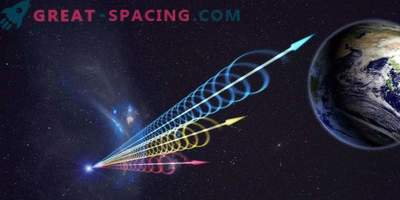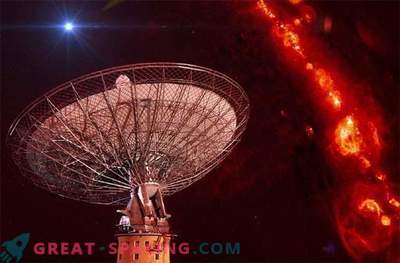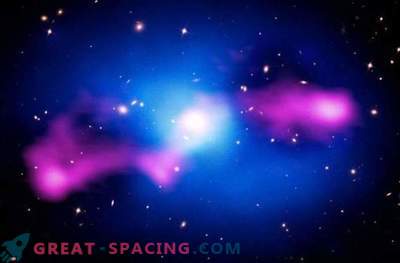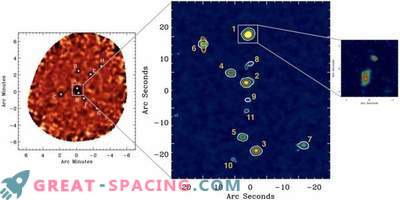
Australian researchers, using the CSIRO telescope in Western Australia, have nearly doubled the known number of fast radio bursts - powerful flashes of radio waves from deep space. The team’s findings include the fastest and brightest radio bursts.
Similar phenomena come from all parts of the sky and last only a millisecond. Scientists do not know what causes them, but the process must include energy equivalent to the amount emitted by the Sun over 80 years. A year later, 20 fast radio bursts were detected, doubling the total number since 2007.
With the help of a new technology, we managed to understand that these features come from the other side of the Universe, and not from our own galactic region. Bursts travel billions of years and sometimes pass through clouds of gas.

The artistic vision of the ASKAP CSIRO radio telescope, which detected fast radio bursts. Scientists do not know what causes these features, but the process should include energy equivalent to the amount emitted by the Sun over 80 years.
Each time this happens, different wavelengths in the explosion slow down in varying amounts. As a result, the explosion reaches the Earth and is in the lens of the telescope. The dates of arrival of different wavelengths indicate how much material broke through during the trip. Radio bursts come from far away, so they can be used to identify all the missing matter in the space between the galaxies. Where does the phenomenal success of ASKAP come from? The fact is that the telescope has a large field of view of 30 square degrees, which is 100 times the full moon. Using antennas in a radical way (each points to a different part of the sky), it is possible to observe 250 square degrees at the same time, which is 1000 times larger than the area of the full moon.

Antennas of the Australian ASKAP telescope with recognizable signature of the Milky Way
Now scientists know that fast radio bursts come from half of the Universe, but the mechanism of their formation is still not known. The researchers plan to learn how to accurately determine the location of the bursts in the sky.
ASKAP is located at the Murchison Astronomical Observatory (MRO) in Western Australia and is considered the forerunner of the future SKA, which will open the doors to the early Universe.











































